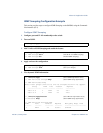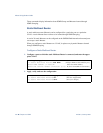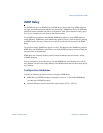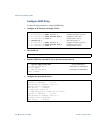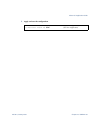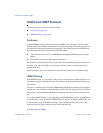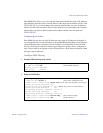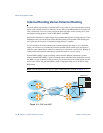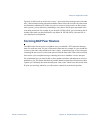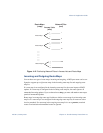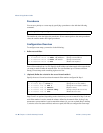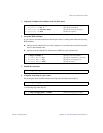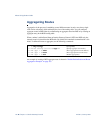
42C4911, January 2007 171
CHAPTER 11
Border Gateway Protocol
Border Gateway Protocol (BGP) is an Internet protocol that enables routers on a network to
share and advertise routing information with each other about the segments of the IP address
space they can access within their network and with routers on external networks. BGP allows
you to decide what is the “best” route for a packet to take from your network to a destination
on another network rather than simply setting a default route from your border router(s) to your
upstream provider(s). BGP is defined in RFC 1771.
GbE Switch Modules can advertise their IP interfaces and IP addresses using BGP and take
BGP feeds from as many as 16 BGP router peers. This allows more resilience and flexibility in
balancing traffic from the Internet.
The following topics are discussed in this section:
“Internal Routing Versus External Routing” on page 172
“Forming BGP Peer Routers” on page 173
“What is a Route Map?” on page 174
“Aggregating Routes” on page 178
“Redistributing Routes” on page 179
“BGP Attributes” on page 180
“Selecting Route Paths in BGP” on page 181
“BGP Failover Configuration” on page 182
“Default Redistribution and Route Aggregation Example” on page 185



